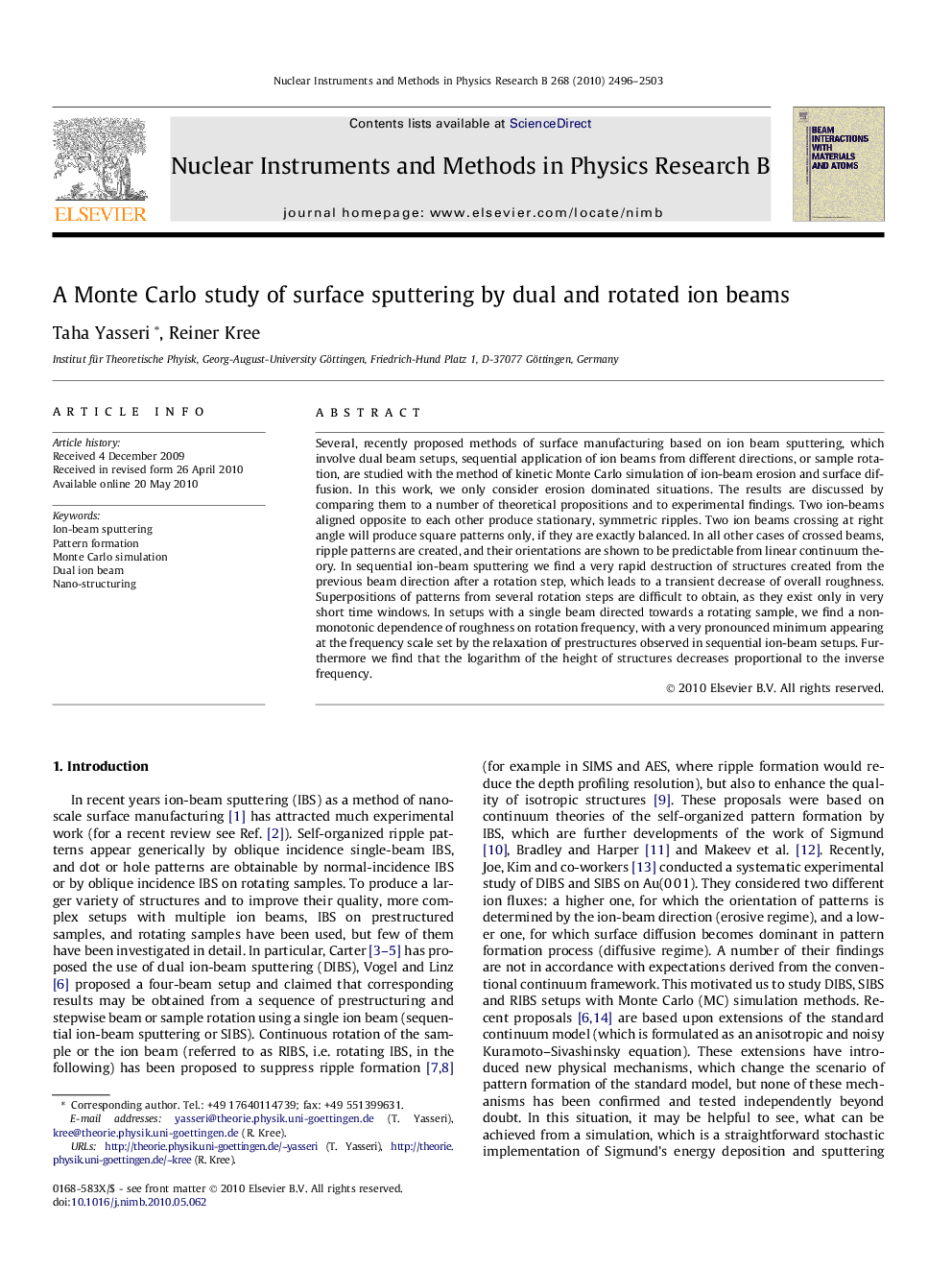| Article ID | Journal | Published Year | Pages | File Type |
|---|---|---|---|---|
| 1681779 | Nuclear Instruments and Methods in Physics Research Section B: Beam Interactions with Materials and Atoms | 2010 | 8 Pages |
Several, recently proposed methods of surface manufacturing based on ion beam sputtering, which involve dual beam setups, sequential application of ion beams from different directions, or sample rotation, are studied with the method of kinetic Monte Carlo simulation of ion-beam erosion and surface diffusion. In this work, we only consider erosion dominated situations. The results are discussed by comparing them to a number of theoretical propositions and to experimental findings. Two ion-beams aligned opposite to each other produce stationary, symmetric ripples. Two ion beams crossing at right angle will produce square patterns only, if they are exactly balanced. In all other cases of crossed beams, ripple patterns are created, and their orientations are shown to be predictable from linear continuum theory. In sequential ion-beam sputtering we find a very rapid destruction of structures created from the previous beam direction after a rotation step, which leads to a transient decrease of overall roughness. Superpositions of patterns from several rotation steps are difficult to obtain, as they exist only in very short time windows. In setups with a single beam directed towards a rotating sample, we find a non-monotonic dependence of roughness on rotation frequency, with a very pronounced minimum appearing at the frequency scale set by the relaxation of prestructures observed in sequential ion-beam setups. Furthermore we find that the logarithm of the height of structures decreases proportional to the inverse frequency.
